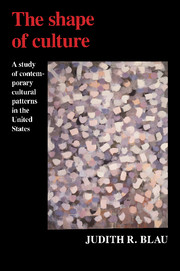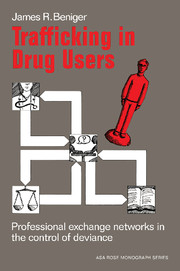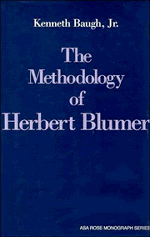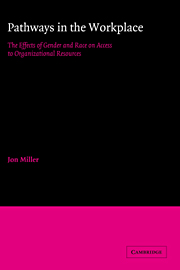14 results in American Sociological Association Rose Monographs

We Shall Live Again
- The 1870 and 1890 Ghost Dance Movements as Demographic Revitalization
-
- Published online:
- 04 August 2010
- Print publication:
- 26 September 1986

The Shape of Culture
- A Study of Contemporary Cultural Patterns in the United States
-
- Published online:
- 06 July 2010
- Print publication:
- 24 November 1989

Trafficking in Drug Users
- Professional Exchange Networks in the Control of Deviance
-
- Published online:
- 07 May 2010
- Print publication:
- 24 February 1984

Society and Identity
- Toward a Sociological Psychology
-
- Published online:
- 05 May 2010
- Print publication:
- 31 March 1986

Age, Class, Politics, and the Welfare State
-
- Published online:
- 30 April 2010
- Print publication:
- 25 August 1989

Dynamic Functionalism
- Strategy and Tactics
-
- Published online:
- 20 January 2010
- Print publication:
- 26 September 1986

Theory of Societal Constitutionalism
- Foundations of a Non-Marxist Critical Theory
-
- Published online:
- 19 January 2010
- Print publication:
- 29 November 1991

The Field of Social Investment
-
- Published online:
- 19 January 2010
- Print publication:
- 23 July 1987

The Methodology of Herbert Blumer
-
- Published online:
- 15 December 2009
- Print publication:
- 29 June 1990

The Meaning of General Theoretical Sociology
- Tradition and Formalization
-
- Published online:
- 10 December 2009
- Print publication:
- 24 November 1989

The Costs of Regime Survival
- Racial Mobilization, Elite Domination and Control of the State in Guyana and Trinidad
-
- Published online:
- 08 October 2009
- Print publication:
- 29 September 1989

Historical Role Analysis in the Study of Religious Change
- Mass Educational Development in Norway, 1740–1891
-
- Published online:
- 06 October 2009
- Print publication:
- 22 March 1990

Pathways in the Workplace
- The Effects of Gender and Race on Access to Organizational Resources
-
- Published online:
- 30 September 2009
- Print publication:
- 31 March 1986

Different Worlds
- A Sociological Study of Taste, Choice and Success in Art
-
- Published online:
- 16 September 2009
- Print publication:
- 26 January 1989

